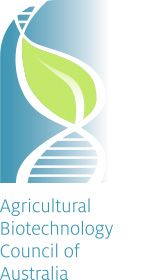INT – LATEST GM CROP FIGURES RELEASED
April 2016. Source: Media release, ISAAA. www.isaaa.org/resources/publications/briefs/51/default.asp
Today, the International Service for the Acquisition of Agri-Biotech Applications (ISAAA) released its annual report detailing the adoption of biotech crops, “20th Anniversary of the Global Commercialization of Biotech Crops (1996-2015) and Biotech Crop Highlights in 2015,” showcasing the global increase in biotech hectarage from 1.7 million hectares in 1996 to 179.7 million hectares in 2015. This 100-fold increase in just 20 years makes biotechnology the fastest adopted crop technology in recent times, reflecting farmer satisfaction with biotech crops.
It is estimated that farmers in up to 28 countries have reaped more than US$150 billion in benefits from biotech crops since 1996. This has helped alleviate poverty for up to 16.5 million small farmers and their families annually totaling about 65 million people, who are some of the poorest people in the world.
“More farmers are planting biotech crops in developing countries precisely because biotech crops are a rigorously-tested option for improving crop yields,” said Clive James, founder and emeritus chair of ISAAA, who has authored the ISAAA report for the past two decades.
Following a remarkable run of 19 years of consecutive growth from 1996 to 2014, with 12 years of double-digit growth, the global hectarage of biotech crops peaked at 181.5 million hectares in 2014, compared with 179.7 million hectares in 2015, equivalent to a net marginal decrease of 1 percent. This change is principally due to an overall decrease in total crop hectarage, associated with low prices for commodity crops in 2015. ISAAA anticipates that total crop hectarage will increase when crop prices improve. Other factors affecting biotech hectarage in 2015 include the devastating drought in South Africa.

